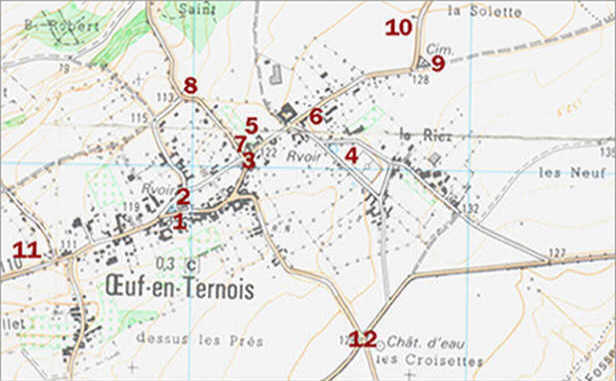
|
|
|
|
|
| in Oeuf | |
| things to see in Oeuf | |
|
|
|
|
|
|
|
|
|
|
1 |
church |
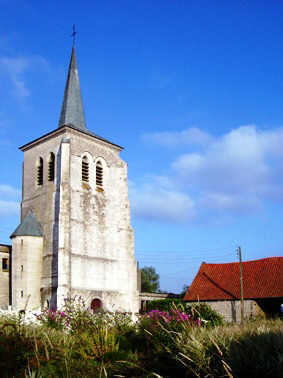
|
Following the bombing of the church in 1944 only its tower (dating from 1609, first photo) could be saved. The nave was completely destroyed and was eventually replaced by a modern one. But even the pre war church (second photo) was in a certain sense a replacement. Originally the village church had been on an entirely different location: that of the current sports field (Le Rietz). After the destruction of most of the village by the troops of Charles V (the Holy Roman Emperor that is) in 1537 that original church was not rebuilt. Instead the chapel of the priory elsewhere in the village (illustration below) was from then on used for the entire population. The picture of the priory chapel is taken from de Album de Croÿ and shows the situation in 1605, when it already served as parish church. The roof seems to be prepared for the addition of a tower which indeed was built four years later. |
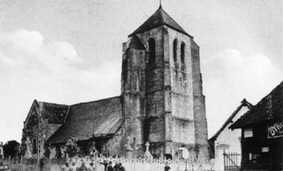
|
|
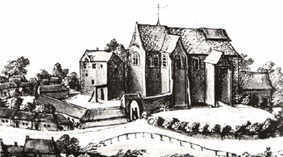
|
|
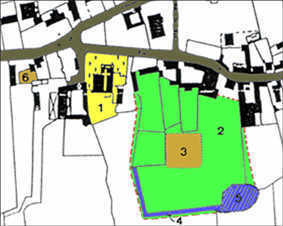
|
Not far from the church (fifty metres East) a faint, somewhat unnatural slope in the landscape can be noticed south of de rue de l'Église. This is all that remains of the motte féodale that once stood there, a primitive castle (3 on the plan on the left) on a man-made mound surrounded by a (dry?) moat (4) and a wooden palisade (red dotted line). The original priory (1) and this motte were connected underground. According to some there was even an underground connection from here to the Mont de Oeuf (halfway along the road to Willeman). Whatever there may have been, the 1944 bombardment surely deeply buried it. West of the church (at 11 rue d'Agerue; 6 on the plan) a somewhat similar, but much smaller mound can be seen right behind a conifer hedge (it's better seen from the church yard). This is what is left of the windmill, belonging to the priory, that stood here between the thirteenth and (early) nineteenth century. |
|
|
|
|
2 |
mairie/village hall |
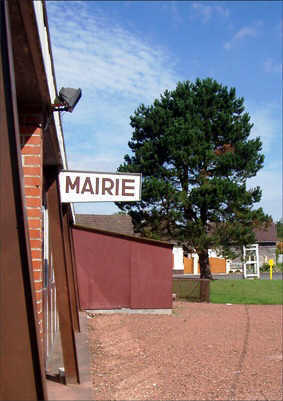
|
The mairie and village hall are both housed in a modern building next to the former presbytery. |
|
|
|
|
3 |
war memorial |
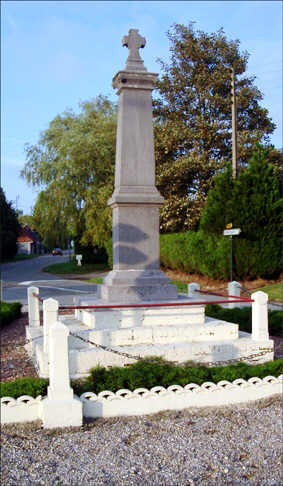
|
The war memorial is the scene of the yearly commemoration of the end of the First World War (Armistice) on the 11th of November. A similar ceremony is held on the 8th of May to commemorate the allied victory in the Second World War (Victoire). The names of the war victims from Oeuf and nearby Guinecourt are carved in the stone:
1914 - 1918 1939 - 1945 |
|
|
|
|
4 |
sports field |
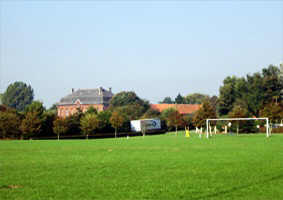
|
The sports field is situated where once, until its destruction in the sixteenth century, the parish church stood. The field consists of a football pitch, a tennis court and a pétanque court. There also is a small playground. The football pitch is often used by Oeuf's own football team. The field can also be used crosswise to play sixte, a type of football with six players instead of eleven. |
|
|
|
|
5 |
bamboo garden |
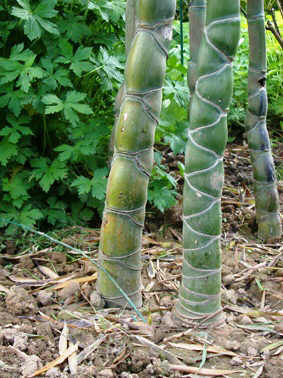
|
The bamboo garden of Mr. and Mrs. Boucry is a jewel for Oeuf. In their Jardin des Collines (a reference to the garden at the imperial summer palace in Beijing) countless bamboo varieties are shown, all suitable for the regional climate. Other plants like roses and hydrangeas are also on display and for sale. |
|
|
|
|
6 |
school |
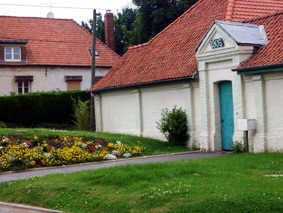
|
The only remaining school in Oeuf is intended for boys and girls between the ages of six and nine. Younger children can attend the school in Beauvois, older children the one in Linzeux. Secondary education is offered in Saint-Pol. The school building in Oeuf dates from 1905 and originally housed a girls' school. The lower floor of the then mairie served as a boys' school in those days (rue de l'Église opposite garage Schotter, the word MAIRIE on the front is hardly visible). |
|
|
|
|
7 |
calvary rue de champs |

|
The custom to mark road crossings and junctions with trees dates from Celtic and Roman times. In Oeuf the arbre aux morts at the crossing in the direction of Guinecourt (next to the water tower) is a good surviving example of this custom. In later ages the trees were often replaced by a christian cross, a calvary. The one at the rue de Champs is one of the oldest in Oeuf. |
|
|
|
|
8 |
calvary royon |

|
The calvary Royon dates from the nineteenth century and is located at the junction of the rue de Champs and the rue d'Humières. In the past there also was a path from this junction to the calvary Penet-Lefevre at the rue de Beauvois. |
|
|
|
|
9 |
new cemetery |
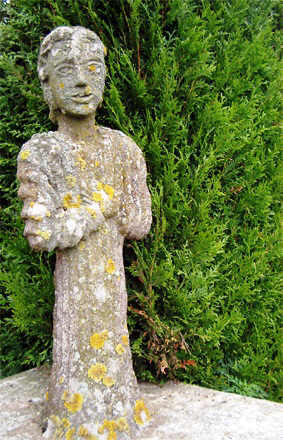
|
The calvary at the new cemetery is modern (1988) and was inspired by examples from Brittany. Its creator is Guy Hoguet. |
|
|
|
|
10 |
calvary penet-lefevre |
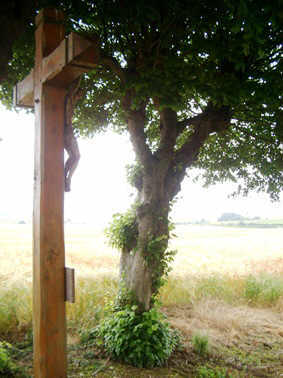
|
The calvary Penet-Lefevre at the rue de Beauvois is the oldest calvary in Oeuf. Once this one too stood next to a road junction but the path connecting this calvary with the calvary Royon has since been ploughed leaving no trace of the former junction. |
|
|
|
|
11 |
calvary rue guilbert |
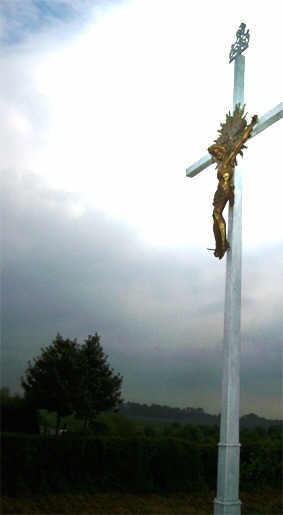
|
The calvary at the rue Guilbert dates from the nineteenth century, just like the calvary Royon. |
|
|
|
|
12 |
arbre aux morts |
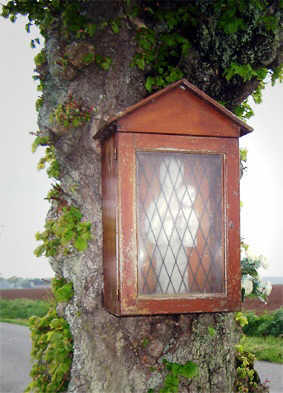
|
Attached to the arbre aux morts is a small wooden shrine containing a madonna and child. The statuette is relatively new and replaces the stolen original. According to a tradition that has now disappeared a small wooden cross was attached to the bottom of this tree whenever an inhabitant of nearby Guinecourt had died. |
|
|
|
| © 2005 - 2010 Rob Zeldenrust, Oeuf-en-Ternois, France. | |
